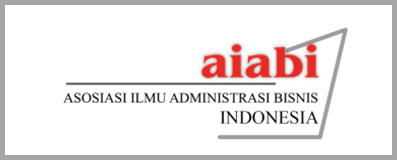Peningkatan dan Perbaikan dari Temuan Audit External ISO 9001 di LP3I College
DOI:
https://doi.org/10.31334/bijak.v16i1.324Keywords:
ISO 9001, PDCA, SOP, Non Conformance Report (NCR)Abstract
The findings of external audits in order to ensure the implementation of ISO 9001 quality management system at LP3I College for three consecutive years provide benefits in the form of improvement, correction and consistency of the quality management system in accordance with applicable requirements. The methodology used refers to the PDCA methodology as a model for running the management process with continuous improvement. Improved system in the stages of the Plan in the form of Management of quality objectives, analysis and evaluation, as well as back up data. Stage of Do in the form of maintenance evaluation and realization of infrastructure and facilities targets, and Special Basic Skills Ability is set as a reference for the new admissions graduation Criteria. Stages of Check in the form of monitoring and evaluation of Quality Achievements by the leader of his subordinates, analysis and evaluation of customer satisfaction. The Act Stages are an evaluation of the effectiveness of Improvement Measures from the Non Conformance Report (NCR) findings, and makes corrective actions against any non-achievement of quality objectives. Corrections in the implementation of QMS as a solution of the findings by the auditor in the case of nonconformance of internal standards for Plan stage: document validation, re-examination of SOP content, and Evaluation on Outsourcing. For the cycle of Do: supplier evaluation responsibilities. While Check cycle: establishing observation findings as Auditor Suggestions or alternative improvements. Whereas the inconsistency actions that must be controlled so that they are always consistent in carrying out procedures include, stage of Plan : mapping each official according to his competence, stage of Do: the entire course and the recording, and stage of Check: the period of analysis and evaluation of customer satisfaction at least once a year.References
Ann Terlaak and Andrew A. King, 2012, The Effect of Certification With The ISO 9000 Quality Management Standard: A Signing Approach, Journal of Economic Behavior and Organization, Vol. 5, No. 1, page 29-43
Columbus, G (2000) Record Management Manual (5th edition), Washington: Memorial Library Publishing.
Diaye et.al, 2018, Difficulties in ISO 9001 implementation in Manufacturing and Service Organizations: Empirical Evidence from Serbia-Montenegro, International Journal for Quality Research, Vol.2, No. 1, page 35-41.
Graeme Knowles (2011) Quality Management, London: GK & N Publishing
Hendartho, Dony, 2014, “Analisis Implementasi Sistem Manajemen Mutu ISO 9001:2008 pada STIAMIâ€, Jurnal Transparansi, Volume VI, Nomor 02, Hal. 124-138.
ISO 9000:2005, Quality management systems – Fundamentals and vocabulary diadopsi menjadi SNI 19-9000-2008 Sistem manajemen mutu – Dasar-dasar dan kosa kata.
ISO 9004:2000, Quality management systems – Guidelines for performance improvements diadopsi menjadi SNI 19-9004-2002 Sistem manajemen mutu – Panduan untuk perbaikan kinerja
ISO 19011:2002, Guidelines for quality and/or environmental management systems auditing diadopsi menjadi SNI 19-19011-2005 Panduan audit sistem manajemen mutu dan/atau lingkungan
ISO Secretariat (2015), Correlation Matrices Between ISO 9001:2008 and ISO 9001:2015, Vienna, ISO Publishser.
ISO Secretariat (2009), ISO 9000 and Selection for Use, Vienna, ISO Publishser.
Nurdin and Prihatmadji, 2017, “Kesesuaian Dokumentasi di LP3I College Jakarta dengan Sistem Manajemen Mutu ISO 9001:2008â€, Jurnal Lentera Bisnis Politeknik LP3I Jakarta, Vol. 6. No.14. Hal. 131-141.
Prihatmadji, Wiwiet, 2014, “Implementasi Sistem Manajemen Mutu ISO 9001:2008 pada LP3I College Jakartaâ€, Jurnal Lentera Bisnis Politeknik LP3I Jakarta, Vol. 1. No. 4. Hal. 145-173.
M. Sokovic, D. Pavletic, and K. Kern Pipan, 2010, Quality Improvement Methodologies – PDCA Cycle, RADAR Matrix, DMAIC and DFSS, Journal of Achievements in Materials and Manufacturing Engineering, 43/1, page 476-483.
National Security Inspectorate UK (2016), PDCA Cycle on ISO 9001, NSI Publisher, London UK.
Naukowe, Zeszyty, 2012, Effectiveness of planning internal audits of the quality system, Scientific Journals, 32(104), page 48–54
Nurcahyo and Sumaedi, 2011, Study On Implementation of ISO 9001 in Higher Education XYZ on Administration Services, Jurnal Standardisasi Vol. 13, No. 3, page 155 – 162.
Rogala, Piotr, 2015, Quality Audits in Municipality Offices – Evidence From Poland, Proceeding of Managing Intellectual Capital and Innovation for Sustainable Capital, Bari Italy, page 2169-2174,.
Rogala, Piotr, 2015, Why Do Internal Audits Fail ? The Internal Auditors Perspective, 9th International Quality Conference at University of Kragujevac, page 367-374.
Santos, Gilberto and Millán, António Leal, 2015, Motivation and Benefits of Implementation and Certification According ISO 9001 – The Portuguese Experience, International Journal for Quality Research 7(1) 71–86.
Downloads
Published
Issue
Section
License

This work is licensed under a Creative Commons Attribution-ShareAlike 4.0 International License
Please find the rights and licenses in Majalah Ilmiah Bijak By submitting the article/manuscript of the article, the author(s) agree with this policy. No specific document sign-off is required.
- License
The commercial use of the article will be governed by the Creative Commons Attribution license as currently displayed on Creative Commons Attribution-ShareAlike 4.0 International License.
2. Author(s)' Warranties
The author warrants that the article is original, written by stated author(s), has not been published before, contains no unlawful statements, does not infringe the rights of others, is subject to copyright that is vested exclusively in the author and free of any third party rights, and that any necessary written permissions to quote from other sources have been obtained by the author(s).
3. User Rights
Majalah Ilmiah Bijak spirit is to disseminate articles published are as free as possible. Under the Creative Commons license, Majalah Ilmiah Bijak permits users to copy, distribute, display, and perform the work for non-commercial purposes only. Users will also need to attribute authors and Majalah Ilmiah Bijak on distributing works in the journal and other media of publications.
4. Co-Authorship
If the article was jointly prepared by more than one author, any authors submitting the manuscript warrants that he/she has been authorized by all co-authors to be agreed on this copyright and license notice (agreement) on their behalf, and agrees to inform his/her co-authors of the terms of this policy. Jurnal Bijak will not be held liable for anything that may arise due to the author(s) internal dispute. Majalah Ilmiah Bijak will only communicate with the corresponding author.
5. Miscellaneous
Majalah Ilmiah Bijak will publish the article (or have it published) in the journal if the article’s editorial process is successfully completed. Jurnal Bijak editors may modify the article to a style of punctuation, spelling, capitalization, referencing and usage that deems appropriate. The author acknowledges that the article may be published so that it will be publicly accessible and such access will be free of charge for the readers as mentioned in point 3.
Every accepted manuscript should be accompanied by "Copyright Transfer Agreement"prior to the article publication.





1.png)




